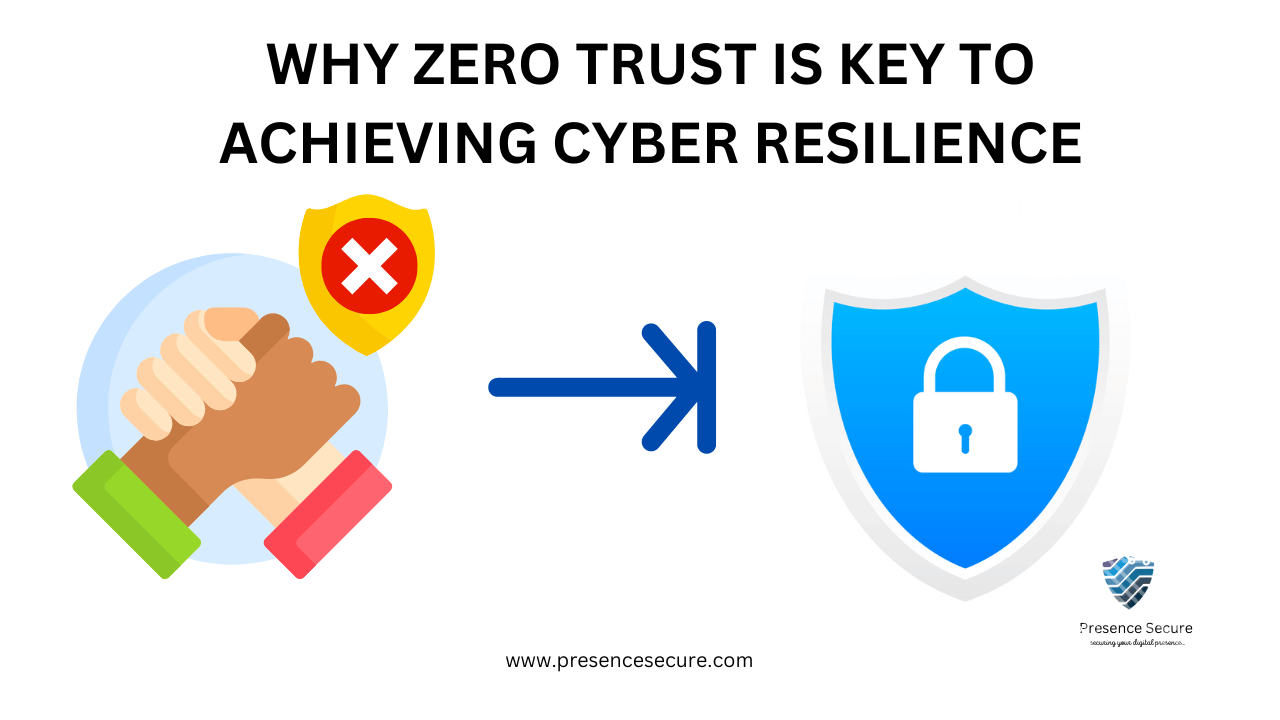
Zero trust is a cybersecurity paradigm where security should be evaluated and used continually. This means that trust is not granted implicitly but must be continually evaluated. You’re a small business owner, and you’ve worked hard to build your company from the ground up. You’ve invested in the latest technology to keep your data secure, and you trust your employees to follow best practices regarding cybersecurity. One day, you get a call from your IT department telling you that there’s been a breach. Your heart sinks as you realize that all of your hard work could be undone in an instant.
How did this happen? You did everything right, didn’t you? Unfortunately, the reality is that traditional security measures are no longer enough to keep your business safe from cyber threats. Hackers are becoming more sophisticated, and they’re finding new ways to get past your defenses. Zero Trust is the solution for that.
In this blog post, we’ll explore why you need Zero Trust to be cyber resilient. We’ll answer some critical questions, like what is Zero Trust, how does it work, and why is it important in today’s digital landscape? By the end of this post, you’ll clearly understand why Zero Trust is the key to being cyber resilient.
Let’s dive right in!
What is Zero Trust?
If you’re looking for a way to keep your digital infrastructure and data safe in today’s constantly evolving business landscape, Zero Trust might be just what you need.
Zero trust is a collection of concepts to minimize uncertainty in enforcing least privilege per request in information systems. It is a security framework that requires everyone, within or outside your organization’s network, to go through authentication, authorization, and continuous security validation before accessing your data and app. This means there’s no traditional network edge, and your resources can be anywhere, including in the cloud or a hybrid environment.
With Zero Trust, you can protect your remote workers, secure your hybrid cloud, and stay prepared for ransomware threats. Don’t worry about trying to figure it all out on your own – there are recognized standards available that can help you align Zero Trust with your organization.
By adopting a zero-trust model, you’ll be able to protect both internal and external entities of your organization without any bias and take a holistic approach to cyber defense. Best of all, a zero trust environment allows you to reduce your risk of incidents while adapting your security posture to fit the ongoing changes in your business.
Why you need Zero Trust to be Cyber Resilient
As an organization, you must embrace the Zero Trust approach to achieve cyber resilience. Here are four reasons you need Zero Trust to be cyber resilient:
- Protect against internal threats
Usually, the biggest threats to any organization’s cybersecurity come from within. Employees, contractors, and partners may unknowingly or intentionally put sensitive data at risk. With Zero Trust, you can ensure that access is granted only to those who need it and only for as long as they need it. This approach limits the risk of insider threats by verifying and validating every user and device attempting to access your organization’s resources.
- Secure remote access
The remote workforce has become the new norm, and it has increased the risk of cyberattacks. With Zero Trust, you can ensure secure remote access by verifying every user and device attempting to access the network. It limits the risk of unauthorized access, data breaches, and other security incidents.
- Defense against advanced threats
Cybercriminals are becoming more sophisticated and advanced in their attack methods. Zero Trust can help you defend against these advanced threats by limiting access to resources based on strict verification and validation criteria. It makes it harder for cybercriminals to gain unauthorized access to your organization’s network, applications, and data.
- Compliance with regulations
Regulations and compliance requirements are becoming more stringent and complex. Zero Trust can help you meet these requirements by providing a robust security framework to help you identify and mitigate risks to your organization’s data.
Conclusion
Zero Trust is a security concept that assumes that no user or device within or outside the organization’s network can be trusted. So, access is only granted based on strict verification. It is an essential component of any organization’s cybersecurity strategy.
It can help you achieve cyber resilience by protecting against internal threats, securing remote access, defending against advanced threats, and complying with regulations. By embracing Zero Trust, you can ensure that your organization’s network, applications, and data are protected against cyber threats.
It is possible to build zero trust architecture from the ground up. Organizations must have detailed knowledge of its assets, its people, policies and business processes.
